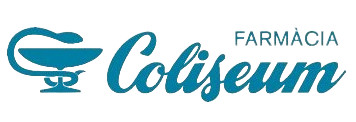Ultra High Dilution: Physiology and Physics
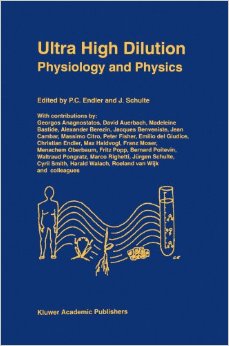 The idea of editing this book was born in the winter of 1988/1989. Christian Endler was organizing the workshop ‘Wasser und Information’ (water and information) in Austria [1], and Jürgen Schulte was working on a publication of his results on atomic cluster stabilities and long-range electromagnetic interaction in atomic clusters. It was Franz Moser from the Technical University of Graz who brought these two together. After a talk that Moser had given in Bremen, Schulte explained to hirn his ideas about clusters and long range interaction, and his concern about reliable theories and experiments in research on ultra high dilutions (UHD) and homoeopathy.
The idea of editing this book was born in the winter of 1988/1989. Christian Endler was organizing the workshop ‘Wasser und Information’ (water and information) in Austria [1], and Jürgen Schulte was working on a publication of his results on atomic cluster stabilities and long-range electromagnetic interaction in atomic clusters. It was Franz Moser from the Technical University of Graz who brought these two together. After a talk that Moser had given in Bremen, Schulte explained to hirn his ideas about clusters and long range interaction, and his concern about reliable theories and experiments in research on ultra high dilutions (UHD) and homoeopathy.
He was suggested to be a speaker at the Austrian workshop. Reviewing the contributions of this workshop and the current literature on UHD and homoeopathy, especially the PhD thesis by Giesela King [2] and the excellent survey by Marco Righetti [3], we decided to work on a book in order to critically encou rage more scientists to work and publish in this field with a high scientific standard. What we had in mind was a useful contribution to the goal to lift research on UHD and homoeo pathy to an internationally acceptable scientific standard, to encourage international scien tists to work in this area and to establish UHD and homoeopathy in academic science. Delayed by our individual academic careers in our specific fields, and delayed by lack of funds it took us about four years to finish this book.
Para ver más sobre este libro clica aquí
Cultured mammalian cells in homeopathy research: The similia principle in self-recovery
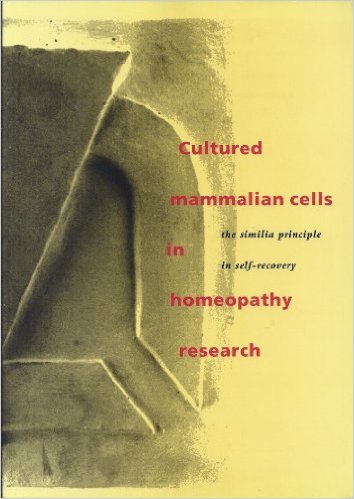 From Preface: In this report an account is given of cell – and molecular biological research into the similia principle in cultivated isolated animal cells. The pattern of molecular changes playing a role in the recovery of cells after an exposure to a threatening condition were investigated and the possibility of stimulating this recovery by the application of the similia principle
From Preface: In this report an account is given of cell – and molecular biological research into the similia principle in cultivated isolated animal cells. The pattern of molecular changes playing a role in the recovery of cells after an exposure to a threatening condition were investigated and the possibility of stimulating this recovery by the application of the similia principle
Para ver más sobre este libro clica aquí
<span»>Physical,chemical and biological properties of stable water clusters
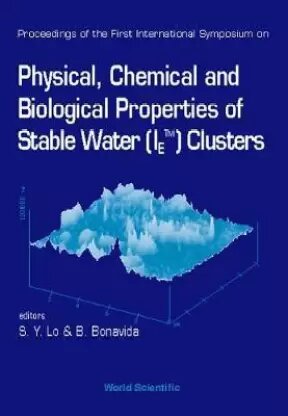 Introduces (IEtm) technology & its cutting-edge applications in industrial & medical fields. Stable water cluster characteristics, including electrical properties, possible formation mechanism & stability in aqueous solutions are discussed.
Introduces (IEtm) technology & its cutting-edge applications in industrial & medical fields. Stable water cluster characteristics, including electrical properties, possible formation mechanism & stability in aqueous solutions are discussed.
Para ver más sobre este libro clica aquí
The Memory of Water: Homoeopathy and the Battle of Ideas in the New Science
 This work tells the story of the persecution of Jacques Benveniste, a French scientist whose career was frustrated when he tried to expand the horizons of traditional science. His research provided an explanation for one of the great mysteries of medical science – the working of homoeopathy. This book explores the witch hunt that was carried out against Beveniste and examines the way that, historically, science has vilified those considered heretics, only to canonize them years later
This work tells the story of the persecution of Jacques Benveniste, a French scientist whose career was frustrated when he tried to expand the horizons of traditional science. His research provided an explanation for one of the great mysteries of medical science – the working of homoeopathy. This book explores the witch hunt that was carried out against Beveniste and examines the way that, historically, science has vilified those considered heretics, only to canonize them years later
Actualización de las evidencias científicas en homeopatía
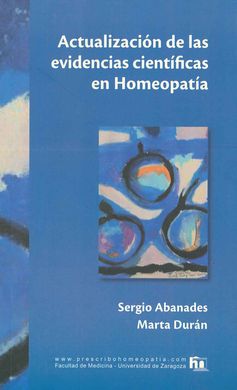 En pleno siglo XXI el debate en torno a las evidencias científicas de la homeopatía está más vivo que nunca, existiendo grandes controversias en especial acerca de su plausibilidad biológica. Se revisan en esta obra los principios homeopáticos, mecanismo de acción y los estudios de ciencia «básica»: efectos en animales, plantas y células humanas. Posteriormente se actualizan las evidencias científicas clínicas en el ser humano, junto a un análisis sistemático sobre las evidencias científicas de la homeopatía por indicación terapéutica, efectos adversos e investigación en veterinaria.
En pleno siglo XXI el debate en torno a las evidencias científicas de la homeopatía está más vivo que nunca, existiendo grandes controversias en especial acerca de su plausibilidad biológica. Se revisan en esta obra los principios homeopáticos, mecanismo de acción y los estudios de ciencia «básica»: efectos en animales, plantas y células humanas. Posteriormente se actualizan las evidencias científicas clínicas en el ser humano, junto a un análisis sistemático sobre las evidencias científicas de la homeopatía por indicación terapéutica, efectos adversos e investigación en veterinaria.
Para ver más sobre este libro clica aquí
Ultra Low Doses: Biological and Clinical Applications
Binder1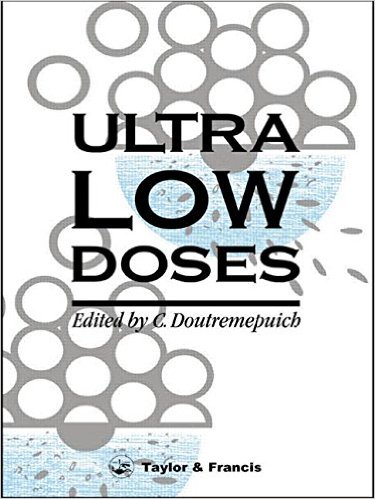 Based on an international conference in France in 1990, this book draws together experts in ultra low dosage pharmacology, with topics covering experimental pharmacology, biophysics, biochemistry and toxicology, cell biology and clinical pharmacology.
Based on an international conference in France in 1990, this book draws together experts in ultra low dosage pharmacology, with topics covering experimental pharmacology, biophysics, biochemistry and toxicology, cell biology and clinical pharmacology.
